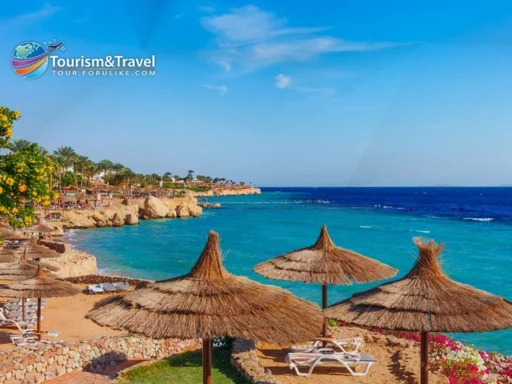
Luxor: A Journey Through Ancient Egypt
Luxor, also known as the “World’s Greatest Open-Air Museum,” is a city in Upper (southern) Egypt that has been continuously inhabited since ancient times. It is located on the east bank of the Nile River, about 500 kilometers (310 miles) south of Cairo. Luxor is home to a number of ancient Egyptian monuments, including:
-
The Karnak Temple Complex: This sprawling complex is one of the largest and most impressive ancient religious sites in the world. It was built over a period of more than 2,000 years by a succession of pharaohs, and it is dedicated to the god Amun. The complex includes a number of temples, pylons, obelisks, and statues.
-
The Luxor Temple: This temple was built by the pharaoh Amenhotep III and Ramses II. It was dedicated to the god Amun and his wife, Mut. The temple is known for its beautiful columns and statues.
-
The Valley of the Kings: This valley is the burial site of many of the pharaohs of the New Kingdom (1550-1070 BC). It contains 63 tombs, including the tomb of Tutankhamun.
-
The Valley of the Queens: This valley is the burial site of the wives and children of the pharaohs of the New Kingdom. It contains 96 tombs, many of which are decorated with beautiful paintings and sculptures.
-
The Temple of Hatshepsut: This temple was built by the female pharaoh Hatshepsut. It is located at Deir el-Bahari, on the west bank of the Nile River. The temple is known for its beautiful architecture and its unique design.
Other things to do in Luxor:
-
Take a Nile River cruise: There are a number of different Nile River cruises available, ranging from short day trips to multi-day excursions.
-
Visit a traditional Egyptian village: There are a number of traditional Egyptian villages located near Luxor. These villages offer a glimpse into the traditional Egyptian way of life.
-
Go shopping: Luxor has a number of markets and bazaars where you can buy souvenirs, spices, and other goods.
-
Try Egyptian food: Luxor has a number of restaurants serving traditional Egyptian food.
;img.crop(width:1080%2Cheight:608))
How to get to Luxor:
-
By plane: Luxor International Airport is located about 6 kilometers (4 miles) from the city center. There are a number of airlines that offer direct flights to Luxor from Cairo and other major cities in Egypt.
-
By train: There are a number of daily trains from Cairo to Luxor. The train journey takes about 10 hours.
-
By bus: There are a number of daily buses from Cairo to Luxor. The bus journey takes about 12 hours.
Where to stay in Luxor:
- There are a number of hotels and resorts in Luxor to choose from, ranging from budget-friendly options to luxury accommodations.
Tips for visiting Luxor:
-
The best time to visit Luxor is during the spring (March-May) or fall (October-November) months. The weather is mild during these months, and there are fewer crowds.
-
Be sure to dress modestly when visiting Luxor. This is especially important when visiting religious sites.
-
Bargaining is expected when shopping in Luxor.
-
Tipping is not required, but it is appreciated.
Luxor is a fascinating city with a rich history. It is a must-visit for anyone interested in ancient Egypt.
Luxor, also known as the “World’s Greatest Open-Air Museum,” is a city in Upper (southern) Egypt that has been continuously inhabited since ancient times. It is located on the east bank of the Nile River, about 500 kilometers (310 miles) south of Cairo. Luxor is home to a number of ancient Egyptian monuments, including the Karnak Temple Complex, the Luxor Temple, the Valley of the Kings, the Valley of the Queens, and the Temple of Hatshepsut.
The Karnak Temple Complex:
This sprawling complex is one of the largest and most impressive ancient religious sites in the world. It was built over a period of more than 2,000 years by a succession of pharaohs, and it is dedicated to the god Amun. The complex includes a number of temples, pylons, obelisks, and statues.
The Luxor Temple:
This temple was built by the pharaoh Amenhotep III and Ramses II. It was dedicated to the god Amun and his wife, Mut. The temple is known for its beautiful columns and statues.
The Valley of the Kings:
This valley is the burial site of many of the pharaohs of the New Kingdom (1550-1070 BC). It contains 63 tombs, including the tomb of Tutankhamun.
The Valley of the Queens:
This valley is the burial site of the wives and children of the pharaohs of the New Kingdom. It contains 96 tombs, many of which are decorated with beautiful paintings and sculptures.
The Temple of Hatshepsut:
This temple was built by the female pharaoh Hatshepsut. It is located at Deir el-Bahari, on the west bank of the Nile River. The temple is known for its beautiful architecture and its unique design.
Other things to do in Luxor:
- Take a Nile River cruise
- Visit a traditional Egyptian village
- Go shopping
- Try Egyptian food

How to get to Luxor:
- By plane: Luxor International Airport is located about 6 kilometers (4 miles) from the city center. There are a number of airlines that offer direct flights to Luxor from Cairo and other major cities in Egypt.
- By train: There are a number of daily trains from Cairo to Luxor. The train journey takes about 10 hours.
- By bus: There are a number of daily buses from Cairo to Luxor. The bus journey takes about 12 hours.
Where to stay in Luxor:
- There are a number of hotels and resorts in Luxor to choose from, ranging from budget-friendly options to luxury accommodations.

Tips for visiting Luxor:
- The best time to visit Luxor is during the spring (March-May) or fall (October-November) months. The weather is mild during these months, and there are fewer crowds.
- Be sure to dress modestly when visiting Luxor. This is especially important when visiting religious sites.
- Bargaining is expected when shopping in Luxor.
- Tipping is not required, but it is appreciated.
Conclusion:
Luxor is a fascinating city with a rich history. It is a must-visit for anyone interested in ancient Egypt.






